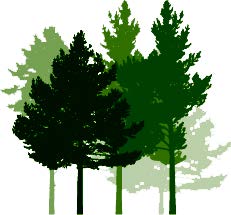Kawa poplar timber - properties and market opportunities

Report Date: August 2023
Author: Dean Satchell, Northland Regional Council
Acknowledgements: Many thanks to the MPI Hill Country Erosion Programme for supporting Northland Regional Council to achieve improved soil conservation outcomes and build our technical capacity.
Conclusions
Sawn timber recovery was acceptable down to 20cm log diameters (averaging 45-60%) and quarter-round sawn posts were efficiently produced from logs with diameters between 18cm and 28cm.
Kawa poplar produced very good sawn timber grade recoveries with little degrade, suggesting that growing Kawa in Northland for sawn timber is likely to be profitable, provided markets for poplar timber products are established.
This research pilots the viability of selected products assumed to be “best bets” for Kawa poplar. These products include:
- Appearance products: Interior joinery, appearance structural and thermally modified appearance products hold potential as applications for Kawa poplar sawn timber. However, markets require developing and further work is necessary on surface hardening processes suitable for poplar timber.
- H4 Posts: CCA treatment methods are required that consistently meet the penetration and retention requirements of Hazard class H4 as per NZS 3640 Chemical preservation of round and sawn timber. In addition, evidence will be required that durability performance of H4 poplar posts is equivalent to H4 radiata pine posts.
- H1.2 Structural: Kawa poplar offers an opportunity for SG10 solid timber and glulam interior applications. Boron treatment is required that meets the penetration and retention requirements of NZS 3640:2003, as per the methods outlined in this report. Market development would be required and should focus on appearance structural products.
- Thermally modified weatherboards and exterior joinery: Evidence of durability performance will be required before market development can take place. However, this product holds significant potential, especially from pruned trees.
- DMDHEU modified poplar hardwood decking: This promising product (hardened for flooring and durable for decking) requires further work to refine the modification schedule and to test the durability performance of the DMDHEU-modified product
- H3.2 treated decking: Poplar "hardwood" decking products could potentially achieve a premium over radiata decking, but require further work to achieve consistent preservative treatment that complies with NZS 3640: 2003.
Determining log value according to diameter is the ultimate goal for this research. Further work is required on product viability and market value to inform log residual value, along with predicted log volumes per hectare at different ages.
Disclaimer: The opinions and information provided in this report have been provided in good faith and on the basis that every endeavour has been made to be accurate and not misleading and to exercise reasonable care, skill and judgement in providing such opinions and information. The Author and NZFFA will not be responsible if information is inaccurate or not up to date, nor will we be responsible if you use or rely on the information in any way.

 Farm Forestry New Zealand
Farm Forestry New Zealand